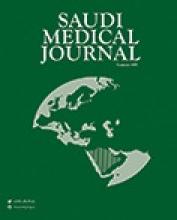Abstract
OBJECTIVE: Multiple pregnancy now warrants special attention from the obstetrician. The incidence of multiple pregnancy had increased during the last 15 years. Multiple pregnancy is a high-risk pregnancy since it is associated with increased perinatal morbidity and mortality. In addition, almost every maternal and obstetrical problem occurs more frequently in multiple than in singleton pregnancies. In view of the above we designed our study.
METHODS: This was a comparative and descriptive retrospective study conducted during the period January 1985 to December 1999 at Wad Medani Teaching Hospital, Wad Medani, Sudan. The study included the follow up of 597 twin pregnancies and 30 triplet pregnancies. The variables used were the age, the parity, the incidence, the sex of neonates and their weights. The study also concentrated on the mode of delivery, and it highly considered the maternal and perinatal complications.
RESULTS: During the period of the study the total number of pregnancies received was 44605. Twin pregnancies accounted for 597/44605 (1.3%), while triplet gestation showed an incidence of 30/44605 (0.1%). In twin pregnancy ovulation occurred spontaneously in 43/597 (7.2%) and it was induced in 167/597 (28%). On the other hand, ovulation occurred spontaneously in triplets 19/30 (63.3%) and it was induced in 11/30 (36.7%). The common maternal complication was pre-term labor, which affected 35.5% in twins and 76.7% in triplets. The rate of cesarean section was 53.1% in twins while in triplet it was 83.3%. The mean birth weight in twin pregnancy was 1890 gm for males and 1780 gm for females. In triplet gestation, the mean birth weight was 1760 gm for males and 1720 gm for females. The maternal mortality rate was 35.8/100.000 live births in twin pregnancies while it was 99/100000 in triplet gestation. The perinatal mortality rate was 115/1000 for twin and 223/1000 for triplet pregnancy.
CONCLUSION: Multiple pregnancy is a high-risk pregnancy, and to decrease its maternal and fetal complications it must be diagnosed early. It should also receive almost antenatal care and care at delivery. Early hospitalization plays an important role of reducing these complications. It must be treated by one obstetrician.
- Copyright: © Saudi Medical Journal
This is an open-access article distributed under the terms of the Creative Commons Attribution-Noncommercial-Share Alike 3.0 Unported, which permits unrestricted use, distribution, and reproduction in any medium, provided the original work is properly cited.






